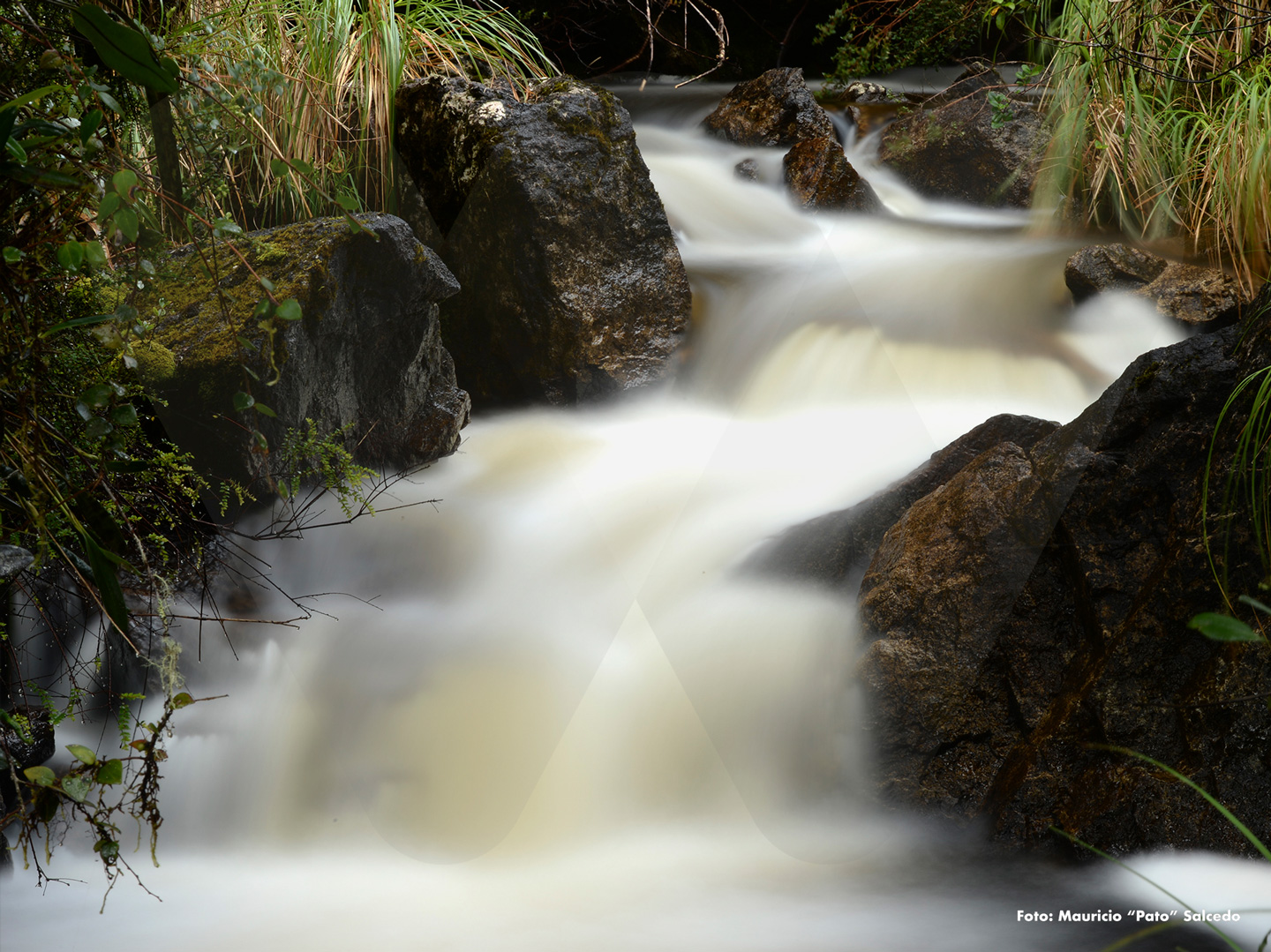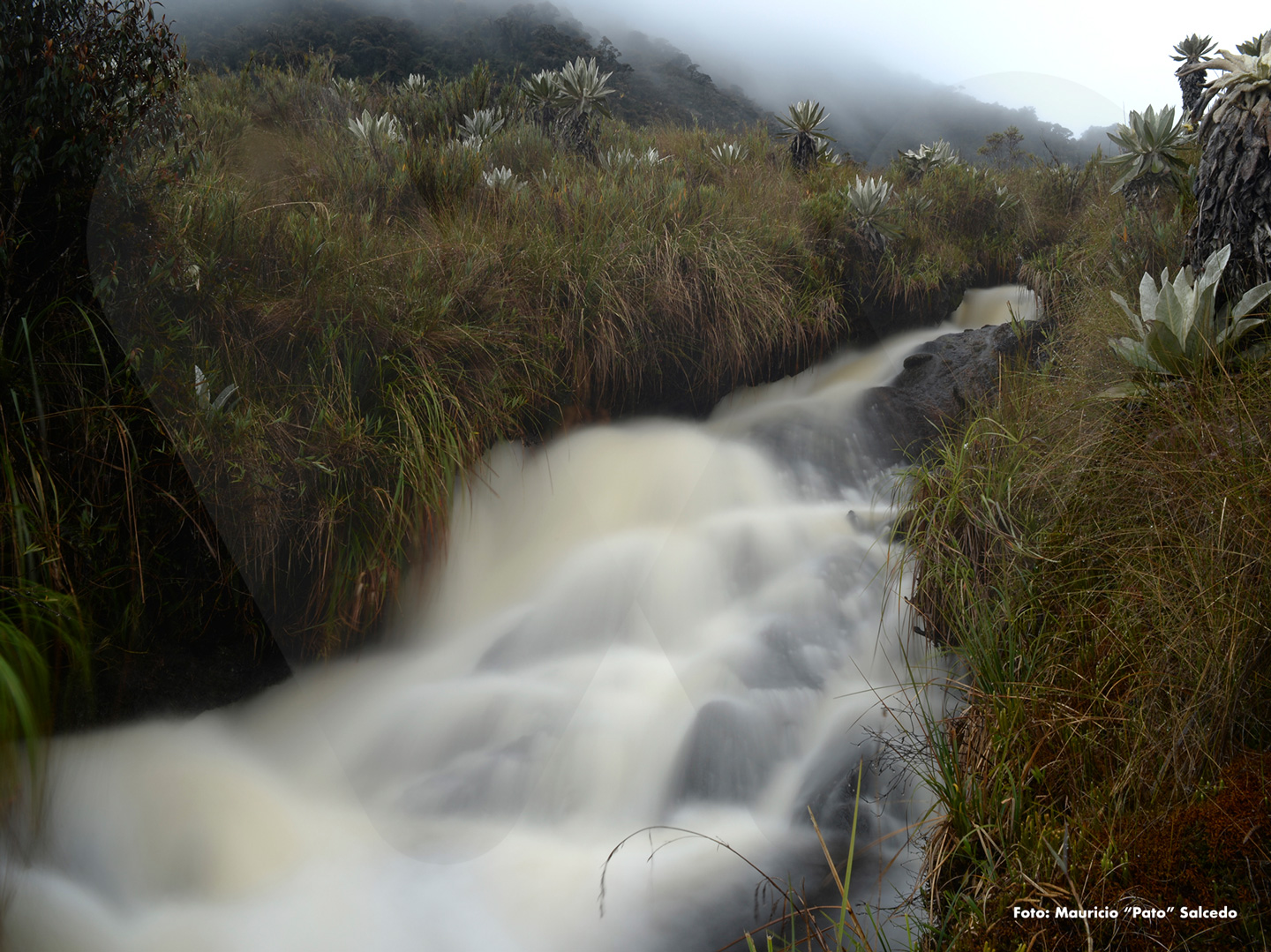The project 'Rio Saldaña – Una cuenca de vida' (Saldaña River – a basin of life) is studying the quality of this vital resource in the Siquila, Amoyá y Cucuana Rivers, as a first step to identify the main pressures affecting it and to help the communities with its management. The first results show that, in places with conserved forests, water quality is better.

The Siquila, Amoyá y Cucuana Rivers descend over the steep mountains of the central Andes Range, in the Colombian Department of Tolima. All three flow into the turbulent waters of the Saldaña River, the main tributary of the Magdalena River in that department. They have their origin in the Nevado del Huila and Las Hermosas National Natural Parks. As all rivers, they sustain life in the territories they cross, giving rise to diverse flora and fauna species.
The Siquila, the Amoyá and the Cucuana are, moreover, a crucial part of the natural and socio-economic life of the communities settled on the plains of Tolima that nourish the Magdalena River Valley. There, the agricultural and livestock farming activities generate a progressive demand of water, a condition that could be seriously threatened if the water quality is affected. The neighboring communities play a crucial role in the protection of the river flows.
The project `Rio Saldaña – Una cuenca de vida´, coordinated by WCS Colombia, in alliance with Cortolima (Regional Environmental Authority of Tolima), the Argos Group Foundation, Agregados Argos and National Natural Parks is a contribution to the preservation of the water associated with these three rivers. The project intends to contribute with the mitigation of some aspects that could affect the water quality and strengthen the contribution of this resource to the subsistence of ecosystems with its environmental services.
Hydric monitoring
“Assessing water quality is one of the most important components of this initiative”, assures Leonor Valenzuela who, from WCS, leads the analysis of the monitoring of water for the project. She adds that they try to avoid situations that are not ideal. “That is, prevent more than correct. For this, it is important to be aware of the condition of the water and if necessary, take action on time. This is what this project is about.”

As these three water flows start their descent down the mountain, the landscapes that surround them are elevated paramos and abundant high-Andean forests. From there, crystalline streams speedily advance. The three basins, Siquila, Amoyá and Cucuana span, respectively, the rural settlements of Bilbao (Planadas), San José de las Hermosas (Chaparral) and Cucuana (Roncesvalles).
Edilma Cardona and Lucila Méndez live in the Siquila basin, in small properties, dedicated to livestock farming and coffee growing. There they have two stream sources that provide them with water for their needs. Like many other owners who have water sources within their modest lots, they conditioned artisanal supply systems that, based on a network of hoses, take the resource to their homes.
“It is something that people frequently do in this region, because we believe that the water we have is good” states Lucila. “And, for this reason”, adds Leonor Valenzuela, “monitoring gains even more importance, as it will enable us to assess, with certainty, the quality of the water these people are using for themselves, for their crops and for their farm animals.”
Additionally, it is necessary to appraise the conditions of the wide environmental surroundings that enable the existence of these currents of life. Therefore, the monitoring program estimates an indicator called Riparian Habitat Quality Index that supplies information on the condition of the vegetation surrounding the rivers.
Implementations
At the same time, the project 'Rio Saldaña – Una cuenca de vida' has been using a series of technical and educational tools to generate adequate conditions for environmental protection.
These implementations are carried out in private properties located in the basins of the three mentioned rivers. Among other actions, we should highlight the planting of native trees, the isolation of hydric sources, the installation of drinking troughs and training to initiate processes of sustainable livestock farming.
“Our purpose, with these actions, is to create environmentally friendly productivity strategies. And we linked hydric monitoring to these actions, to assess the impact on water quality of what we do”, states Lina María Caro, WCS biologist who coordinates the technical area of the project.
In this connection, Leonor Valenzuela explains that “monitoring started when all these implementations began. The idea is, then, to evaluate, year after year, when these interventions start causing a positive effect on the quality and quantity of the hydric resource.”
The monitoring process, broadly speaking, consists of taking samples of water from the rivers that cross the properties where the project is carrying out implementations. Researchers measure parameters such as oxygen saturation level, pH, dissolved solids, temperature and amounts of chlorides and nitrates. They also test for the presence of bacteria. All this enables them to determine, effectively, if the water is suitable for the development of life in those places.
Some results
As per results to-date, water quality in these basins ranges from medium to high level, but there is presence of chlorides and nitrates that can affect the soil. These same analyses also indicate that there is presence of some bacteria. As it is not, therefore, drinking water, the project is installing water filters in the homes and schools of the region.

Lucila Méndez states that “having these filters is very important, as we do not have to boil the water now. These appliances give us almost pure water; with their use, we will prevent diseases.”
The monitoring also indicated that in places with better tree coverage, water quality is superior. Consequently, the project 'Rio Saldaña – Una cuenca de vida' is planting native tree species in the intervened properties that, in the mid-term, will recover forest spaces that disappeared in the past.
Probably, in a not too distant future, inhabitants of the region, such as Edilma and Lucila, and all the peasants who live in the beautiful mountains of Tolima, will not have to worry about the water they drink and use for their daily activities. “If we think of all the consequences that the climate change entails, one of our priorities, as society in general, should be to guarantee the existence of the hydric resource today and for the future generations”, concludes Leonor Valenzuela.
And this is why, with the implementations and the monitoring of the hydric resource, the project hopes to contribute for the Saldaña River basin to continue being a basin of life.
